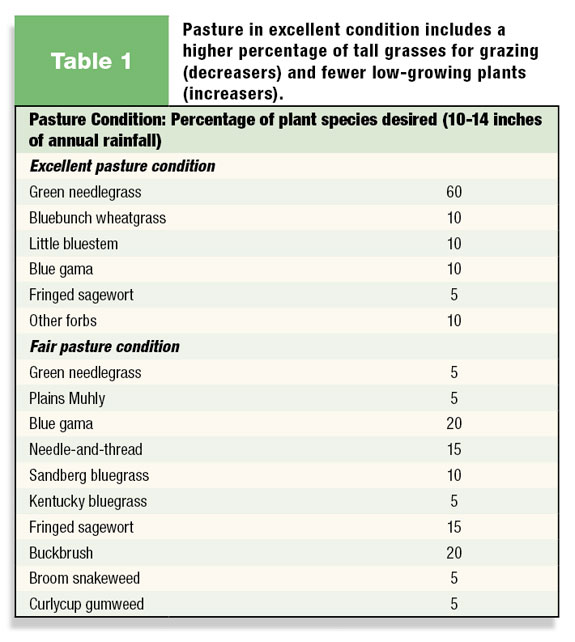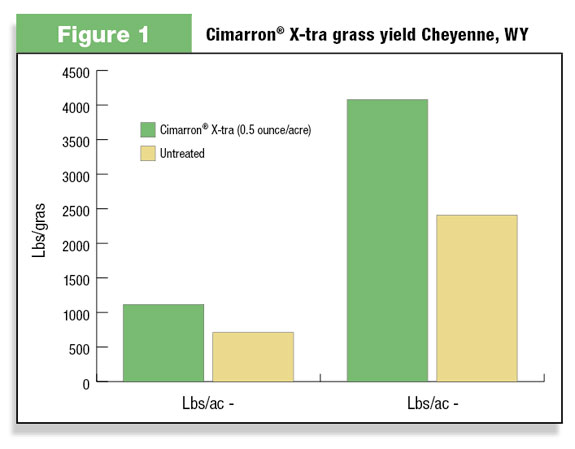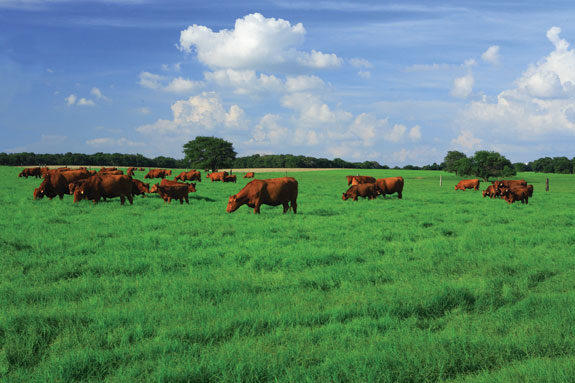And as they were busy focusing on their cows, the grass that supported those cattle too often was overlooked. But over the last couple of years, that thinking has begun to change.
Thanks to research and greater industry awareness, more cattle owners and managers are realizing the value of producing abundant grass and using their cattle to harvest this important crop.
By producing more desirable grass, you have many more options. For some cattle operations, it means being able to increase stocking rates and feed more cows per acre. For others, it’s an opportunity to cut more hay and buy less feed in the winter, maximizing their operation’s efficiency and reducing input costs.
More available grass per acre also can increase calf weaning rates or make earlier weaning possible and allow producers to take advantage of beneficial price points in the seasonal market. All these options allow you to operate with greater efficiency and improved profit potential.
Where do I start?
Making your pastures work harder takes a systems approach that includes grazing management, balanced fertility levels, adequate weed control and control of other pests that can hurt grass production. Manage all those things well and you’ll achieve the result you’re looking for: increased grass production.
The first step in improving grass production is assessing current pasture condition. Start by determining the level of “decreaser” grass species. These are typically more desirable, tall grasses that can decline under excessive grazing pressure. Decreaser species are good indicators of pasture condition.
As they decline, invasive weeds and low-growing plants (“increasers”) can become established and begin to thrive. While pasture managers often prefer to keep some low-growing plants such as forbs and brush available for wildlife feeding, you don’t want them to dominate the pasture – it’s all about maintaining the right balance between decreasers and increasers.

For optimal cattle production, having at least 76 percent decreaser plant species in the pasture is considered excellent condition. Maintaining at least 50 percent of decreaser species is recommended.
Below that level, increasers gain the advantage and the pasture’s productivity is compromised. Then it’s time to determine how the deterioration occurred and make plans for returning those acres to peak production. (See Table 1.)
Don’t underestimate grazing management
How you maintain good grazing condition in your pasture has a lot to do with your grazing management plan and stocking rate. For example, when pasture is in excellent grazing condition, it may only take three acres to feed one cow per month. However, when the same pasture condition is poor, every cow will need 15 acres.
Under this same scenario, a 100-head herd could be maintained on 300 acres per month or 900 acres over three summer months. That number jumps to 4,500 acres for three months when pasture conditions are poor.
To avoid poor conditions, you’ll want to initiate a grazing management plan that includes several key steps:
1. Maintain the appropriate stocking rate. Determine the right number of cattle to keep your pasture in good to excellent condition.
2. Monitor grazing. Depending on the size of the pasture, erect a few 10- by 10-foot enclosures that protect grass from cows in various areas. Monitor the grazing around these areas at regular intervals, daily to weekly, depending on the size of the pasture and the number of cattle. When the grass outside an enclosure has been grazed down 50 percent, it’s time to move the cattle to another pasture and let that pasture recover.
3. Record pasture condition over time. One way to do this is to drive a steel post into the ground, then take photos in all four directions away from the post. Each year go back to the post and take a set of pictures. Then, as the years progress, compare the photos to see if you’re maintaining the grass system or starting to see encroachment or establishment of increaser plants or other undesirable plants.
4. Modify grazing patterns. If there are areas where cows aren’t grazing, encourage them to use those spots with mineral blocks or water tanks.
5. Adjust the stocking rate as needed. If your pasture needs recovery time, you may need to lease additional pasture land or reduce cattle numbers for the long-term good of your operation. While these are not easy decisions to make, they are sometimes necessary.
Proactive pasture improvement
When considering the addition of crop nutrients, it’s important to determine where you’ll get the best return on your investment. In drier Western environments, it may be the low-lying hay meadows that get adequate moisture and are more likely to provide a positive return on your crop nutrient investment. In other areas of the country that get more rainfall, it may be most pastures. Conducting soil tests will help identify which nutrients are needed.
Keeping weeds under control will help you avoid the need for restoration tactics, which involve removing undesirable weeds and replacing them with desirable species. When rangeland conditions are greatly deteriorated, the restoration process can take two to four years.
Research has shown that weed-control programs can provide good return on investment in a fairly short period of time. For example, grass production trials in Cheyenne, Wyoming, showed that in the first year, even with limited rainfall, land treated with Cimarron X-tra herbicide produced 57 percent more grass than untreated acres.

With more rainfall in the second year, the treated land produced 69 percent more grass than the untreated land (See Figure 1).
Controlling other pests is another important step in maintaining and improving pasture. After you’ve identified any rodents, insects or other problems that may be holding back grass production, work with your local retailer to identify products available for control. Then follow proper application rates, procedures and timing to achieve maximum benefits.
You’ll also want to consider other control alternatives that may be available and determine how they might fit into your treatment program. Whether you use chemical, mechanical, biological or burning control methods, be sure to allow enough time to evaluate treatment effects. You may not notice visible benefits until the following summer.
The condition of your pasture depends on the care you provide. By taking the time to manage your acres properly from the beginning, you’ll reap long-term benefits for years to come. FG
Craig Alford is range, pasture and invasives portfolio manager for DuPont Crop Protection. He can be reached at Craig.Alford@usa.dupont.com










